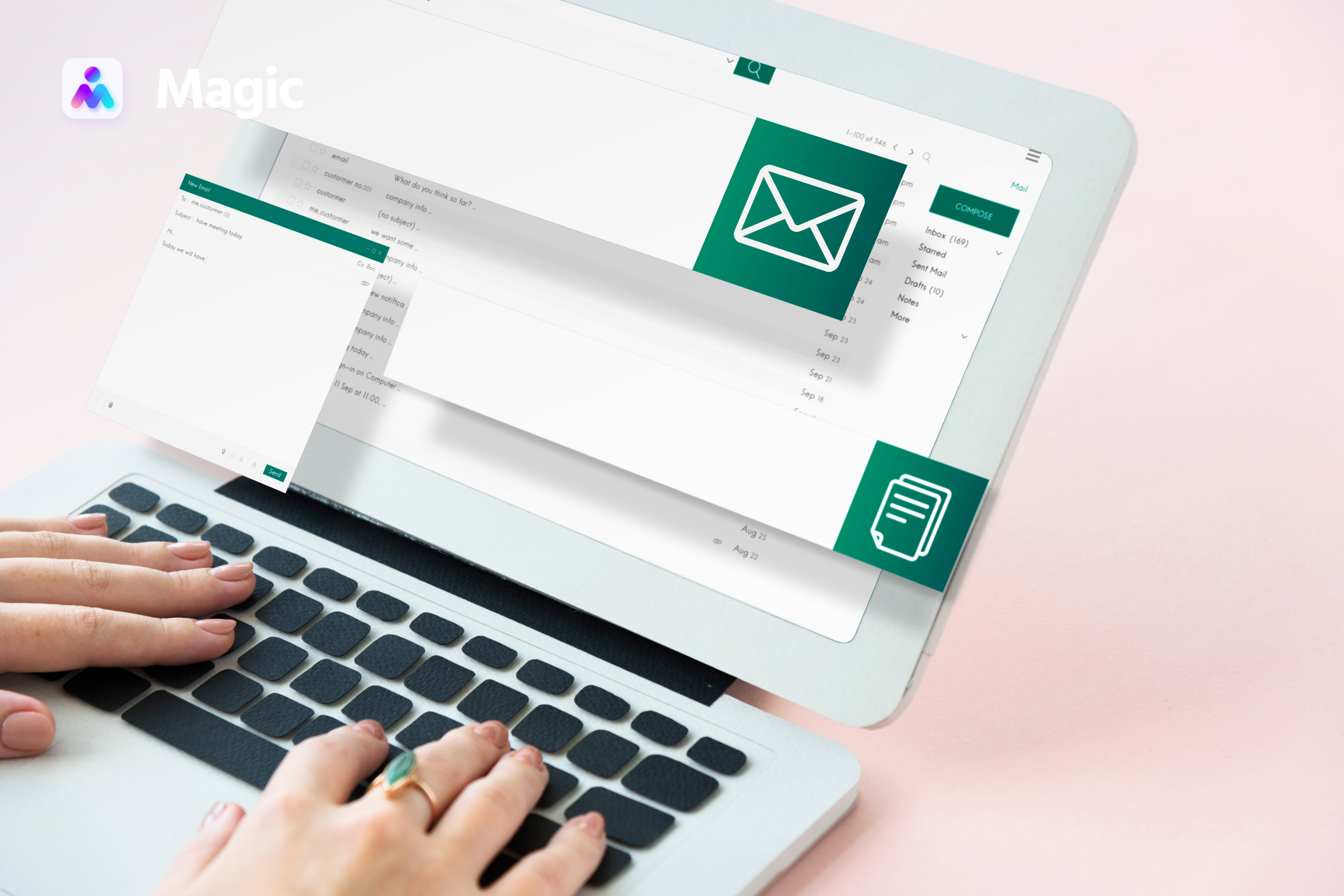Emails and their unbridled potential for reaching new markets and curating fresh leads is well known. Cold email outreach is a pillar of nearly every business’s lead generation process.
It’s cost-effective, efficient, and scalable to nearly unimaginable lengths. To develop and execute an effective outreach strategy, there’s a long to-do list that needs to be tackled. Virtual assistant services can transform your email outreach strategy into a seamless and compelling journey.

The sheer volume of emails sent and received daily makes it hard to connect and resonate with audiences. If you want your cold emails to cut through the noise of almost 350 billion emails, you’ll need a well-crafted email outreach strategy.
For this purpose, you can offload all the legwork to a virtual assistant to get the ball rolling. From doing research and sending emails to tracking progress and preparing reports, a VA can handle various tasks to free you up for what’s important.

Not sure what tasks to give your virtual assistant? In this eBook, we share 150 tasks they can do for you so you can save hours a day.
Learn MoreUnderstanding Email Outreach
Email outreach means strategically using email to target and pursue new audiences, customers, collaborators, or influencers.
It can be used to raise brand awareness, boost website traffic and sales, promote content and contests, and build credibility in the market.

In a world cluttered with communication channels, email, with its 4.37 million users, has three main advantages over other channels.
- Email has immense reach as a one-on-one stream of communication.
- It is cheap and scalable.
- Email provides an autonomy that owned platforms like social media cannot.
But just like any other overcrowded channel, businesses need help to have their emails placed in inboxes, opened, read, and acted upon.
A Gartner report states the open rate for sales emails is 24%, meaning less than 1 in 4 of these emails get opened.
To improve the odds of your cold emails connecting with their intended recipients, we’ve compiled a three-part guide to systematically take you through the process of building and fixing your email outreach strategy from scratch.
Part 1: Before Sending Cold Emails
Define Your ICPs
For your email outreach copy to hit its mark, it needs to face the right direction.
Who is it talking to? What role do they play in their organization?
How big is their organization, what industry is it in, how old is it, what is their annual revenue, how many employees do they have?
Your Ideal Customer Persona (ICP) isn’t just a set of static data points. It’s an evolving entity defined by demographics, psychographics, and the latest industry developments.
An ICP can serve as the blueprint to ensure your outreach efforts are directed toward the right people. A virtual assistant can research the market for individuals or companies that stand to gain the most from your products or services.
A VA helps fine-tune your ICP using insightful data, profile templates, and customer relationship management tools. They can conduct surveys and consult client-facing employees and marketing research agencies to get to know your customers better.
If you already have an ICP, redefining and updating it regularly will synchronize and synergize the efforts of both marketing and sales functions in identifying and nurturing leads.
Build and Segment Your Prospect Lists
The fastest way to land yourself in spam folders (and trouble with the law) is by sending irrelevant cold emails. The success of your email outreach strategy depends on the relevancy of your emails more than anything else.
Have your VA leverage your ICP to create lists of individuals and organizations that match its criteria. Look at factors such as industry, company size, location, or specific job roles to filter out and score leads.
Tailor the email copy and offer according to the segment a lead belongs to. This could be something as straightforward as their timezone or requiring a little more research, such as their organization’s choice of accounting software.
Use the segments to recommend products to them, offer one-time discounts, or share a blog post you’ve recently published.
The more personal your emails feel, the less likely they are to result in unsubscribes and spam complaints.
Validate Contact Information
Sending an email to the wrong address has consequences. If there’s a typographical error in the address, its storage is full, the server is down, the website has moved to another domain, or the email address simply doesn’t exist, it will hurt your outreach campaign.
Over some time, emails sent to addresses that aren’t fully functional result in low deliverability rates, sketchy sender reputation, and high chances of more and more of your emails being marked as spam.
With Google and Yahoo set to cap the acceptable abuse report rate at 0.3% from February 2024, it’ll become crucial for businesses to maintain list quality and hygiene.
The easiest way to do this is email verification.
Verifying an email address is a one-step process that cleans temporarily unavailable or invalid addresses from your list.
You just have to type in the email address in a verification tool, such as Hunter’s Email Verifier.

Regular list clean-ups will keep your bounce rate and spam complaint rate in check and your campaign stats more reliable.
Part 2: The Anatomy of Effective Outreach Emails
Subject Lines that Capture Attention
Subject lines are the first email element recipients see. Unsurprisingly, they influence 70% of opens.
Use your subject line to create intrigue and/or entertainment in the reader.
It could ask a question, like ‘Which companies are the gods of big data smiling on?’
Or read like the start of a text from a friend that immediately makes you want to call them. ‘I think I’m in a cult.’
Personalized subject lines also pave the way for more opens.
Yours can contain the recipient’s name, their company’s name, their designation, location, or recent news event involving them.
- Got a minute, {first_name}?
- {Company X’s} shortcut to success
- The {industry} space is heating up in {location}
- Congratulations on the {recent company milestone}
Avoid spammy words and keep subject lines short to boost mobile email opens.
Personalization: Beyond “Hi [Name]”
Personalization is one of those additions in an email that’s always welcome, like free coffee, good weather, or a three-day weekend.
But not every personalization tactic makes recipients feel like they’re part of a one-on-one conversation with you.
Take ‘Hi {first_name}’ for example. On its own, it’s harmless enough, but if it’s the only personalized part of your email copy, you’re doing your leads a disservice.
This cold email sets the bar high by using a personalized copy and a personalized image.
But even if all you know about the lead is their name, use it more naturally by scattering it throughout the email body.
And while there’s nothing wrong with using AI to mass-personalize emails, sounding AI-generated is still looked down on by most leads. Have your VA refine the output so it’s not as glaringly obvious as this one.

Crafting a Compelling Message Body
Your copy should offer a clear value proposition.
- How does your product or service benefit the lead?
- Why do they need it?
- Is there anyone else just like them that’s bought it?
- What results can they expect, and how soon?
If a lead decides to click on the offer, redirect them to a dedicated landing page that builds awareness, demonstrates product features, gives them pricing options, etc., depending on what stage of the sales funnel they’re in.
Provide them with offers with a cost-benefit ratio that’s impossible to refuse. Like a free trial for 14 days in exchange for the permission to keep emailing them.
If a lead has opened your email, and visited your website, but hasn’t bought anything, strengthen your pitch with a risk reversal offer like a money-back guarantee.
Win over leads with social proof and case studies. List the results you’ve helped other clients achieve in words they understand.
Call-to-Action that Encourages Engagement
Calls to Action (CTAs) guide potential customers onward and upward to the next stage in their buyer journey. Every cold email in your sequence has to be aligned with the goal of your email outreach strategy, whether it’s hitting reply, visiting your website, or making a purchase.
For ToFu leads, keep CTAs at bare minimum levels. Your leads can have download access to an ebook containing ‘100 10-minute Vegan Dinner Recipes’ if they just reply with ‘100’. Ask yes or no questions, and allow number-based replies to increase response rates.
If your leads are closer to the final stage, use personalized CTAs.
A ‘Get on a call with me, {first_name}?’ button that redirects to your calendar or ‘Set {Company X}’s cash registers ringing’ can also increase conversions.
Part 3: Enhancing Communication Efficacy with Data-Driven Insights
Tracking and Analyzing Outreach Performance
Your email outreach strategy doesn’t end with sending emails; it begins with understanding their impact.
Monitor key metrics – open rates, click-through rates, conversion rates – to evaluate effectiveness.
You’ll have to delve deep into understanding your audience and the various elements of your email to improve performance.
For example, a low open rate could be caused by anything from an unverified email list to lackluster subject lines.
Low conversions could be due to an irrelevant or unconvincing offer, lack of a landing page, or a trust gap between the audience and you.
A/B Testing: Refining Your Approach
Even after analyzing campaign KPIs, it can be difficult to pinpoint which areas of your email need improvement.
A/B testing pitches two variations of the same element, such as:
- Subject lines
- Intro
- Main copy
- Images
- Design color palette
- CTA button text,
- Time of sending, etc.
to find out which one fares better with your audience.
The different versions are sent to a small subset of your outreach list, and the winning version is dispatched to the rest of the list.
A/B testing simplifies decisions about the various elements of an email and enables marketers to refine their strategy based on real insights instead of guesswork and half-baked theories.
A/B testing the CTA alone showed this etailer that they could increase their click-through rate by as much as 45%.

Utilizing Data to Personalize and Improve Future Campaigns
Use the insights from the previous two steps in tandem with individual user behavior for maximum impact.
If one email out of a sequence has done particularly well with a certain subset of leads, you can use that as a base to hone your future communication with them and improve conversion rates.
It can also help you create tailored offers for individual leads that they won’t be able to turn down easily.
With Google and Yahoo cracking the whip on the spray-and-pray method, nuanced cold outreach through fewer, better-quality emails is the way to go.
Conclusion
Email outreach is more than just typing out a few emails and blasting them at everyone on your list. To form a sound strategy, you’ll have to study market data, create an ICP, cater to them through your messaging, and monitor campaign stats.
And it doesn’t end there. The digital landscape evolves continuously, and to match it, so does your email outreach strategy. Virtual assistant services are a cost-effective way to keep up with trends and demands, increase engagement, and boost ROIs.
Connect with bigger audiences and make more sales than ever by hiring a virtual assistant to help you with various tasks. Delegate the email outreach legwork to a VA, from researching and drafting emails to following up and tracking progress using relevant tools and software.
By leveraging the skills and capabilities of a virtual assistant, you can streamline and enhance your email outreach strategy. This way, you can focus on core business activities while optimizing your communication with potential customers.










